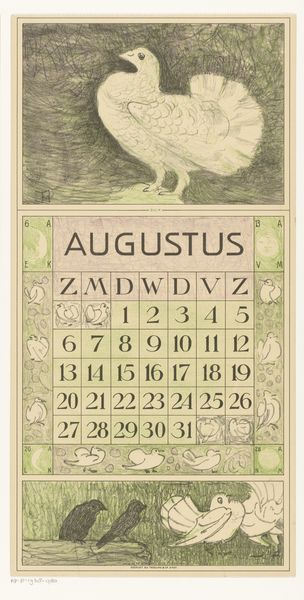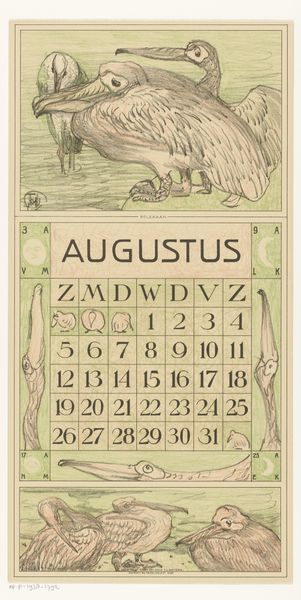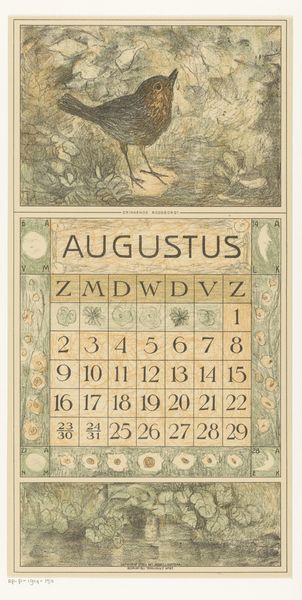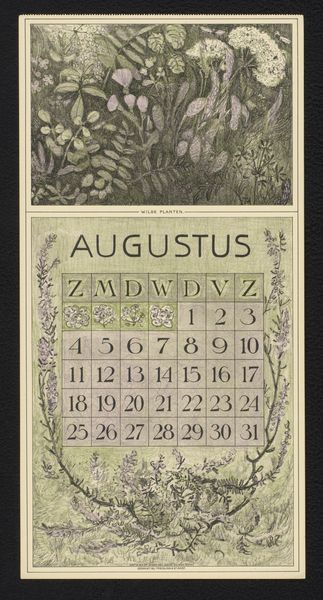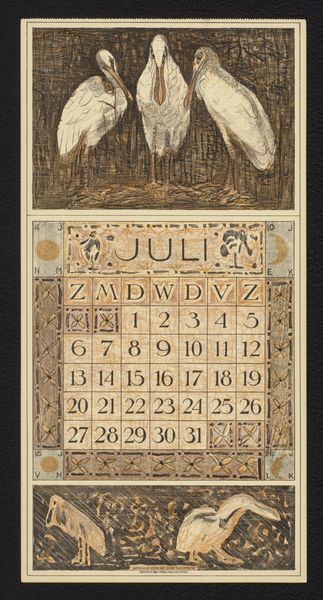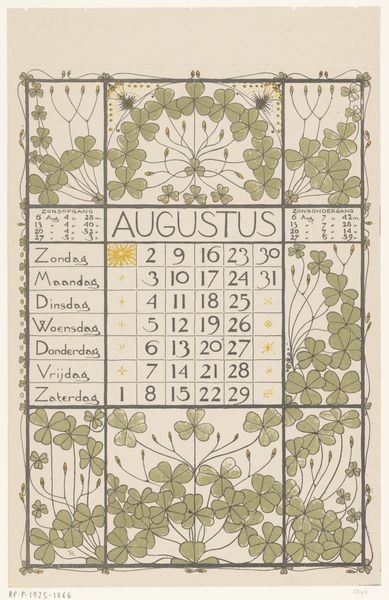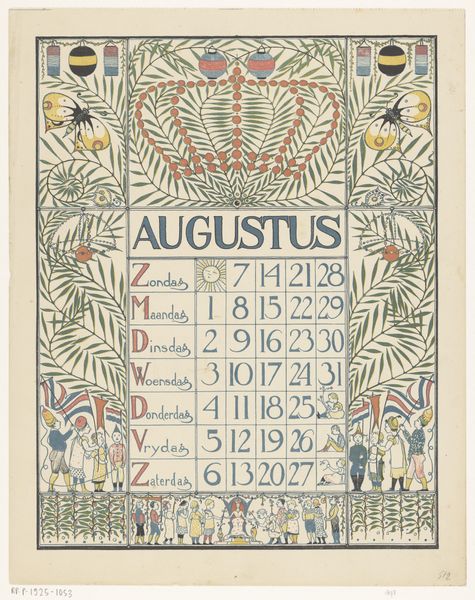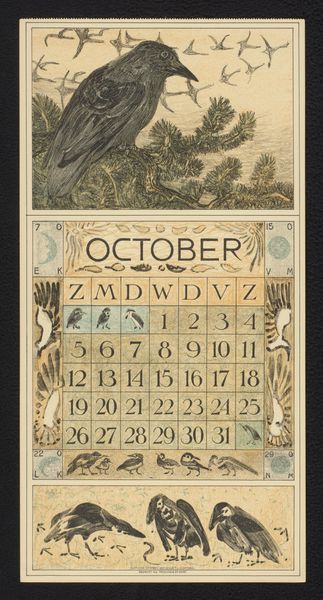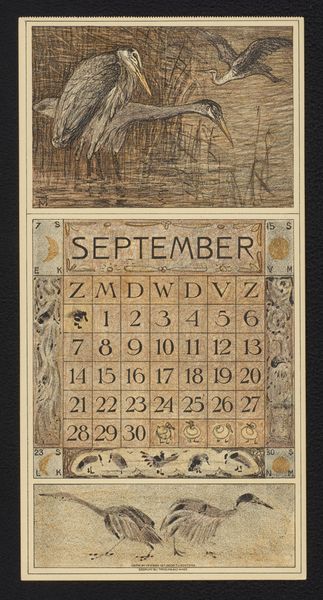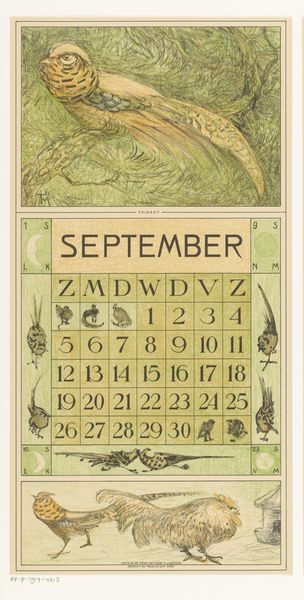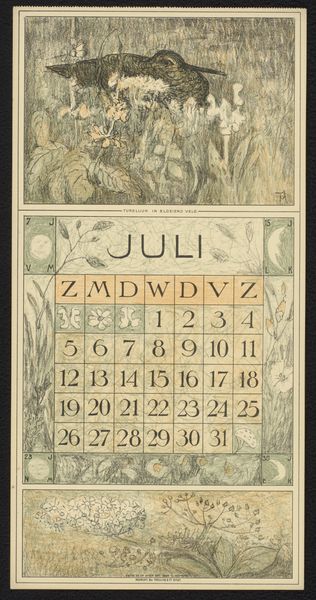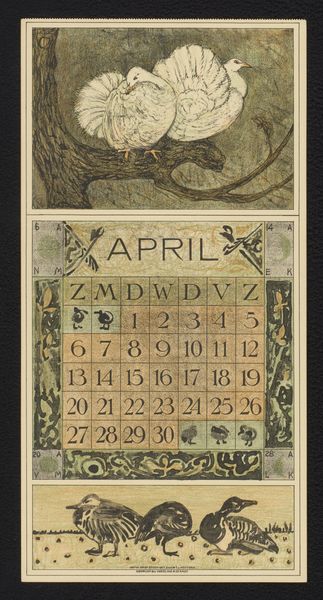
drawing, print, paper, woodcut
#
drawing
#
art-nouveau
# print
#
figuration
#
paper
#
organic pattern
#
woodcut
#
vertical pattern
#
symbolism
#
pattern repetition
Dimensions: height 418 mm, width 212 mm
Copyright: Rijks Museum: Open Domain
Curator: This is “Kalenderblad voor augustus 1913 met ooievaars,” a calendar sheet for August 1913 with storks, created in 1912 by Theo van Hoytema. It’s a print, made using woodcut, and it’s on paper. It looks pretty detailed. What do you make of it? Editor: It’s interesting to see a calendar elevated to the level of art. The birds feel very decorative. What was the intended audience for such a detailed and beautiful, yet functional, object? Curator: Well, let's think about the means of production. Woodcut is a relatively accessible and repeatable process. Who had access to printing presses at the time? What kinds of goods were being produced that had art integrated into them, and how did that affect consumption? Editor: So, thinking about labor… someone meticulously carved this design. Was this common to find artistic techniques like woodcut in things other than high art prints? Curator: Exactly. It challenges our contemporary understanding of high art versus craft. Art Nouveau was all about blurring those lines, wasn’t it? Mass production allowed for art to reach wider audiences, becoming part of everyday life rather than something confined to galleries. Look closely at the composition. Does the grid structure mimic something about industrialized society perhaps? Editor: I see what you mean! The rigid calendar layout alongside the organic, flowing stork motifs creates a striking contrast, especially considering that art-nouveau embraced nature in opposition to industrial production. It definitely makes me think about consumer culture in a new way. Thank you! Curator: Indeed! Thinking about art's relationship to production and consumption can provide us with some exciting insights!
Comments
No comments
Be the first to comment and join the conversation on the ultimate creative platform.
